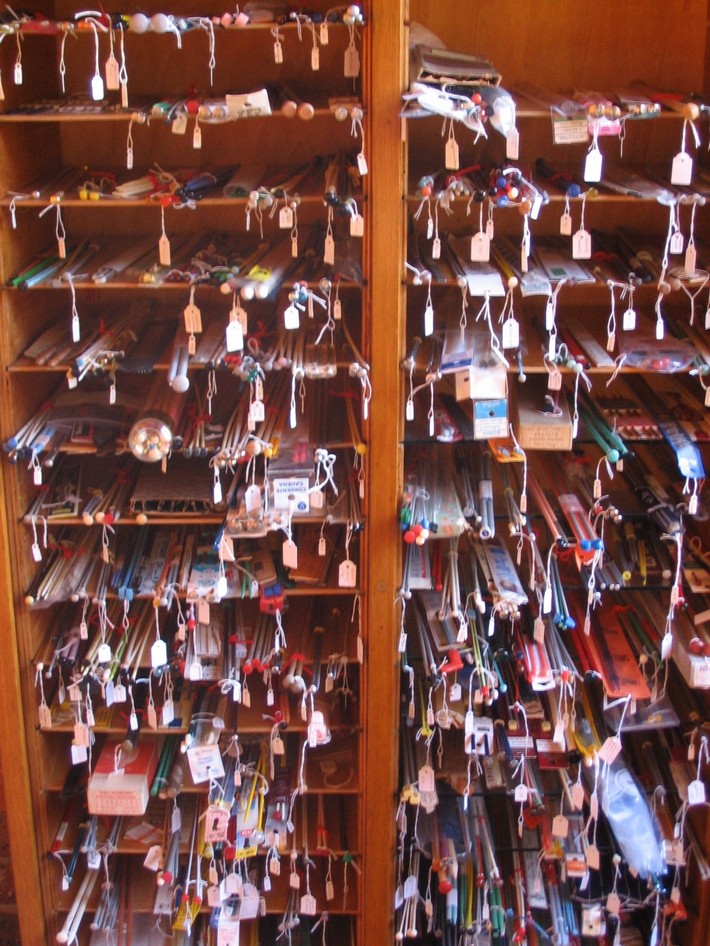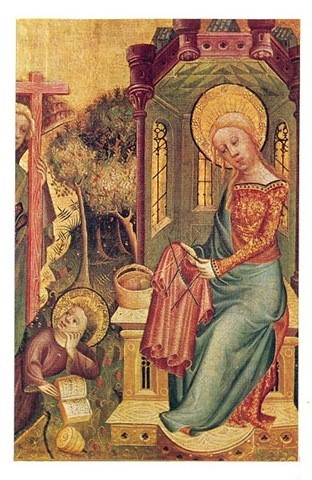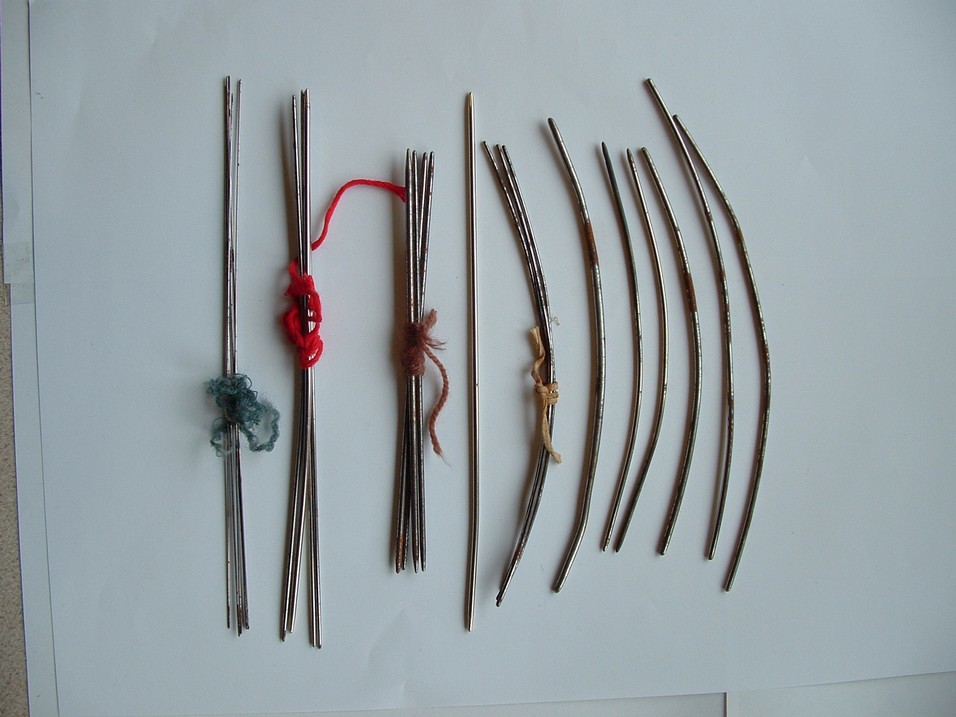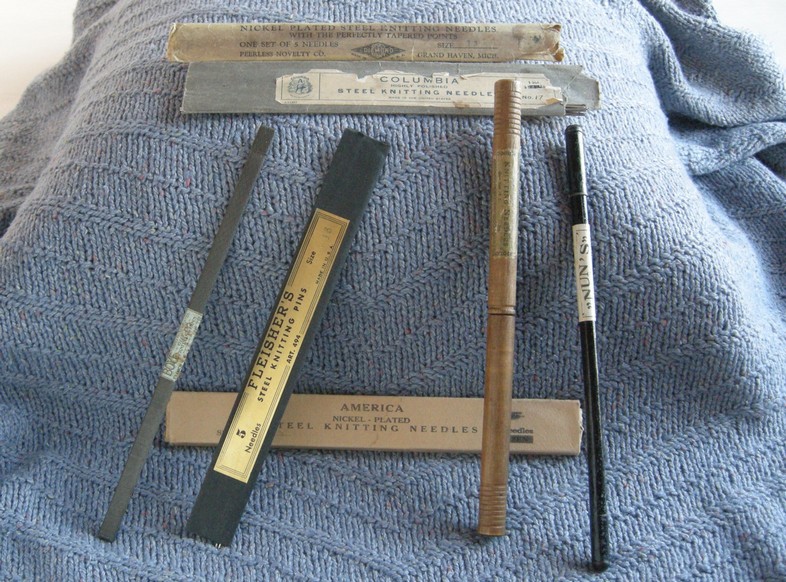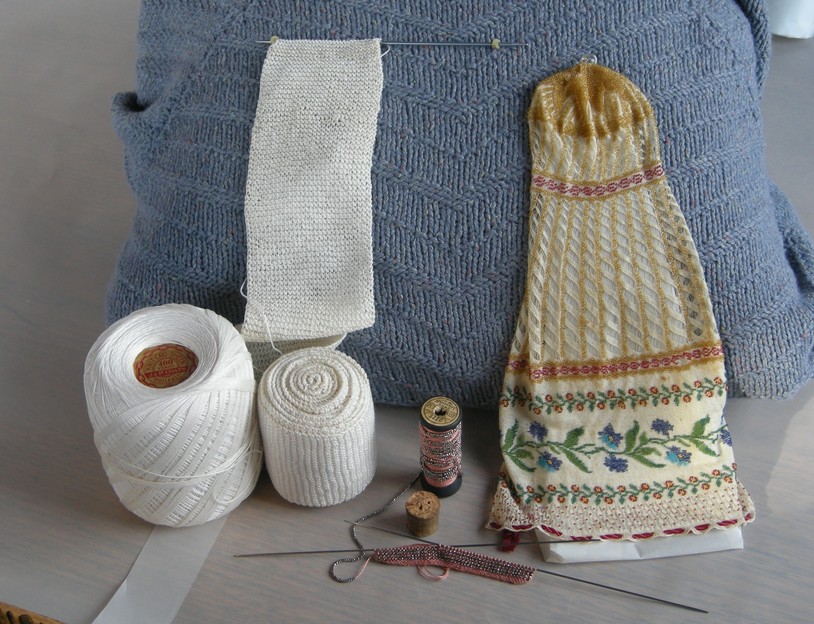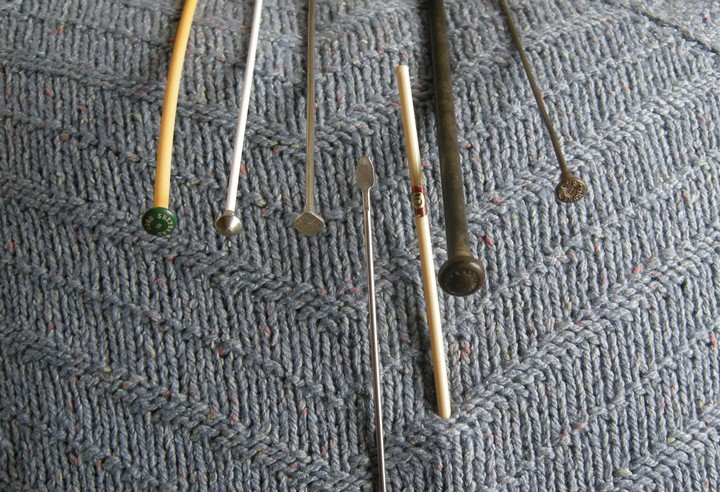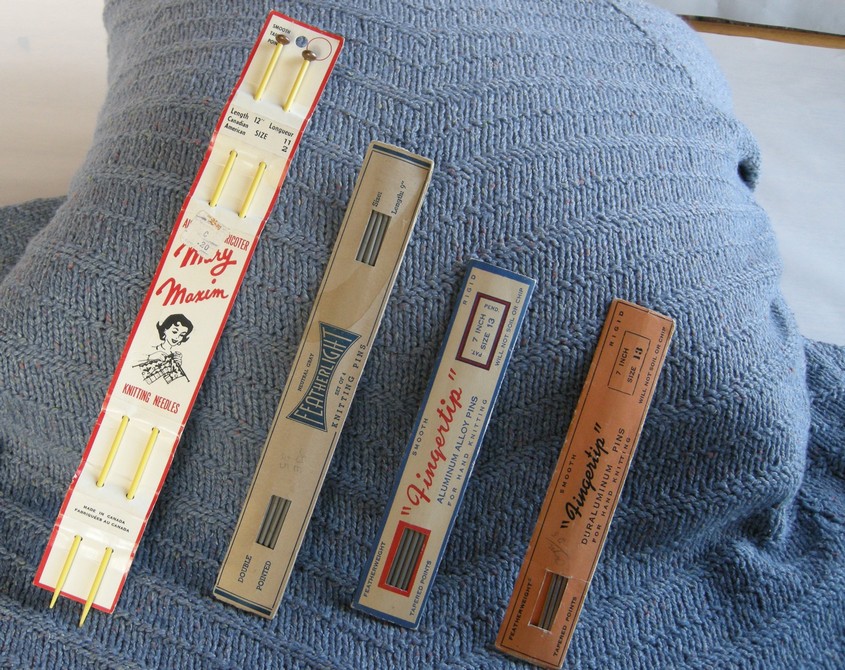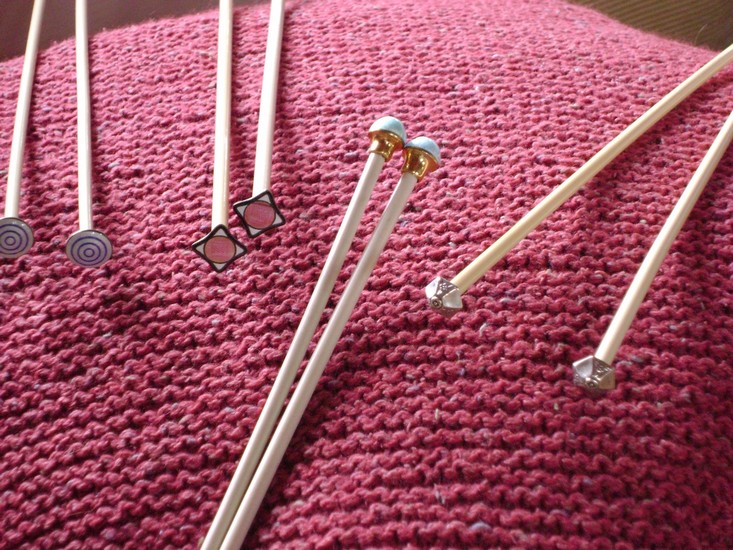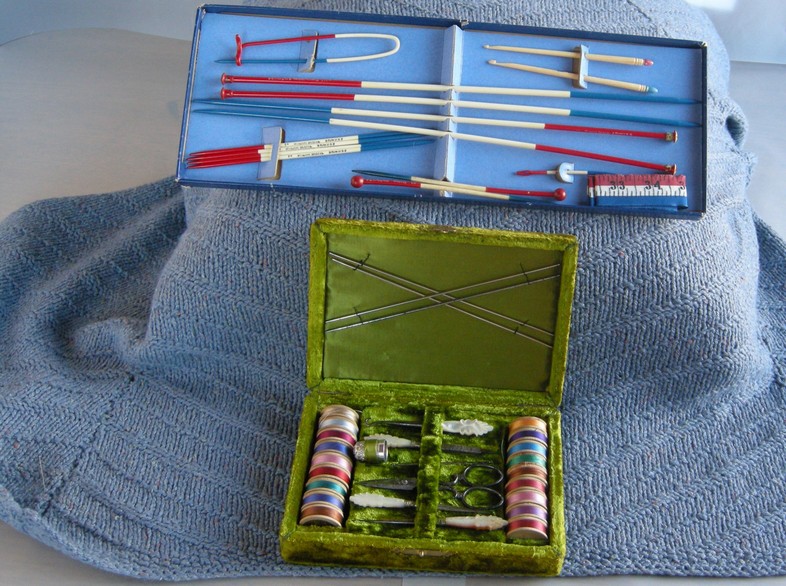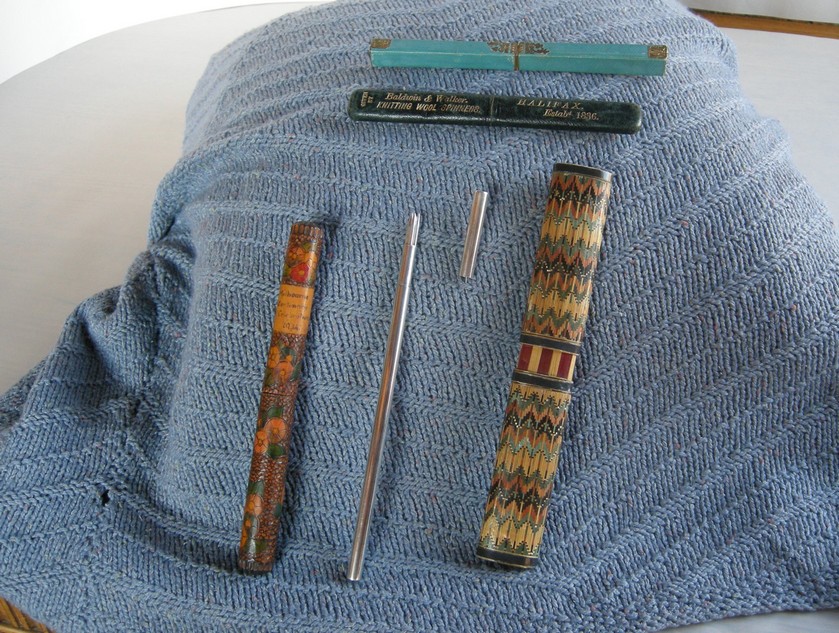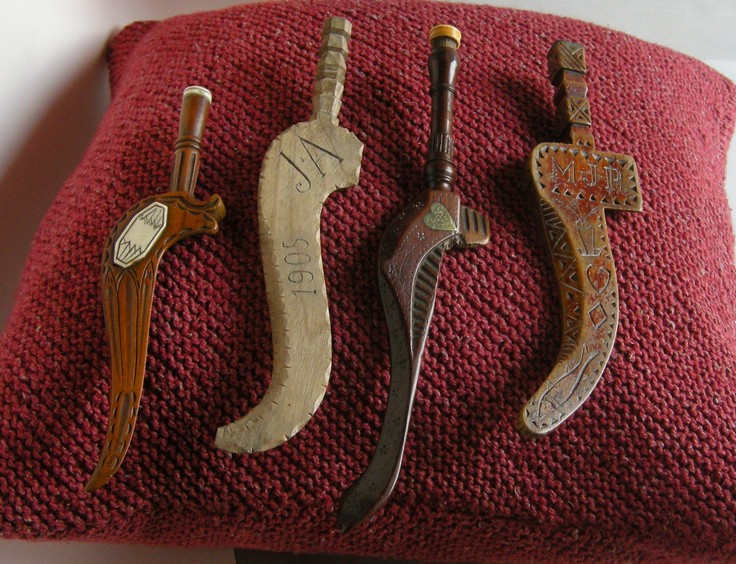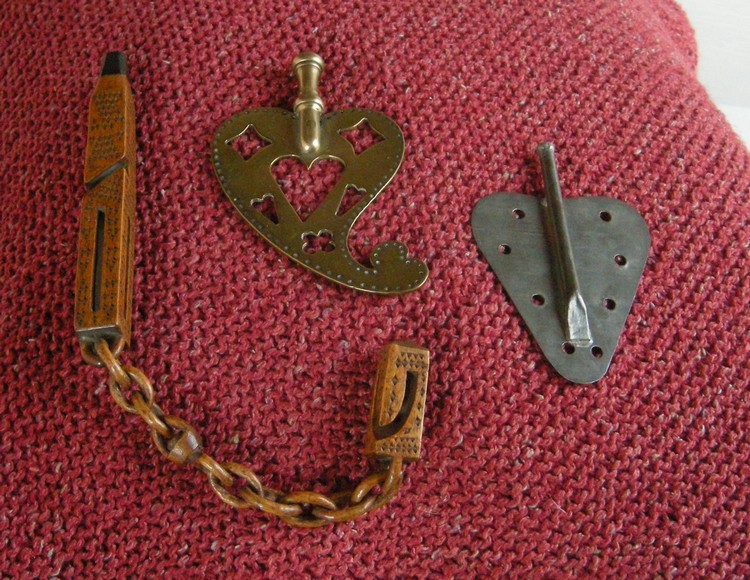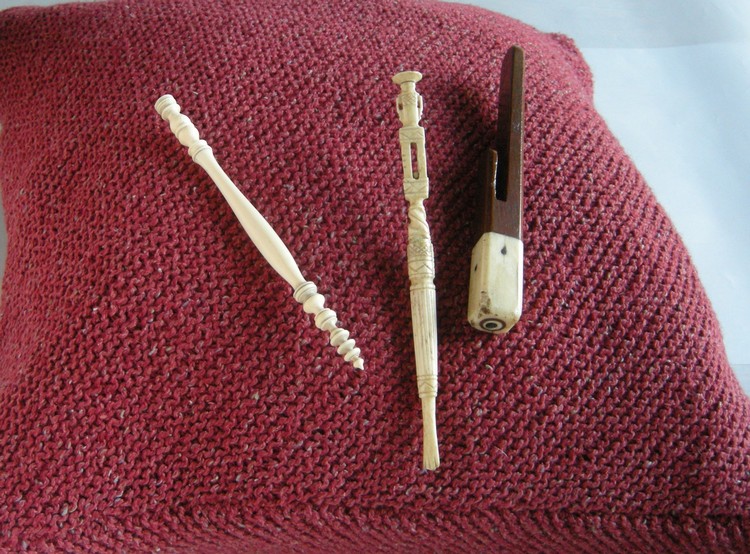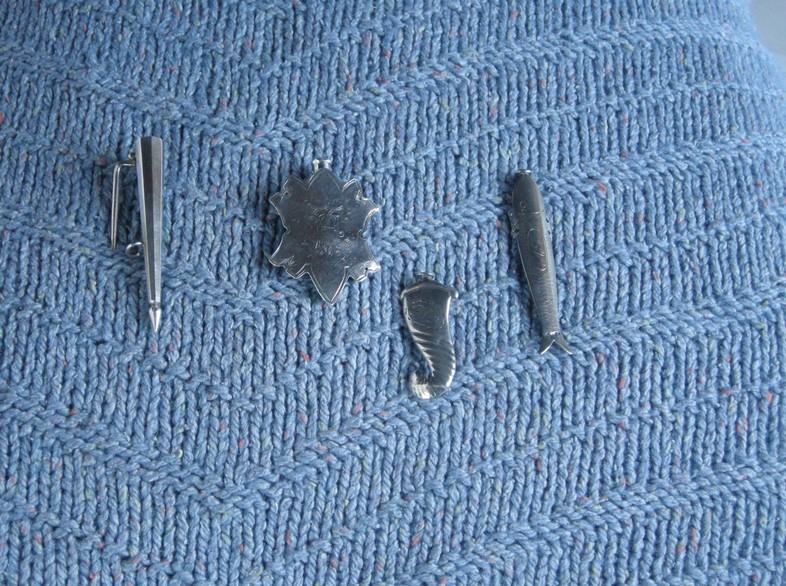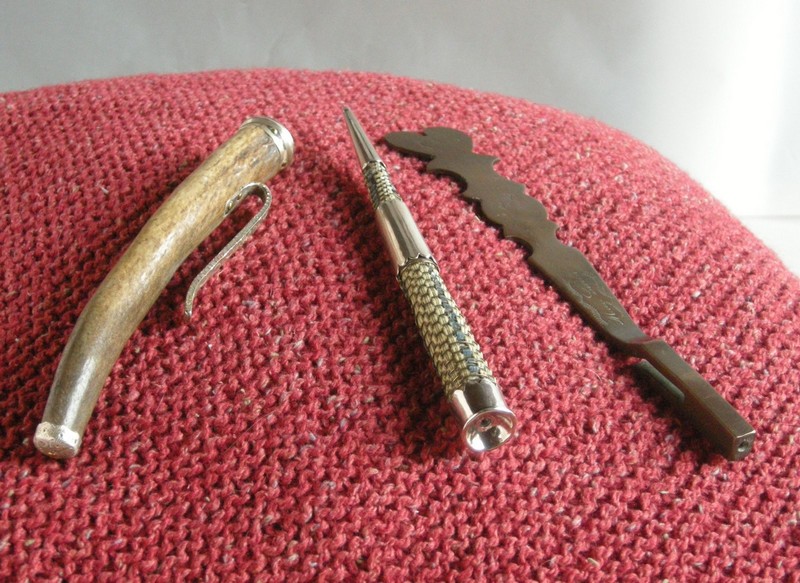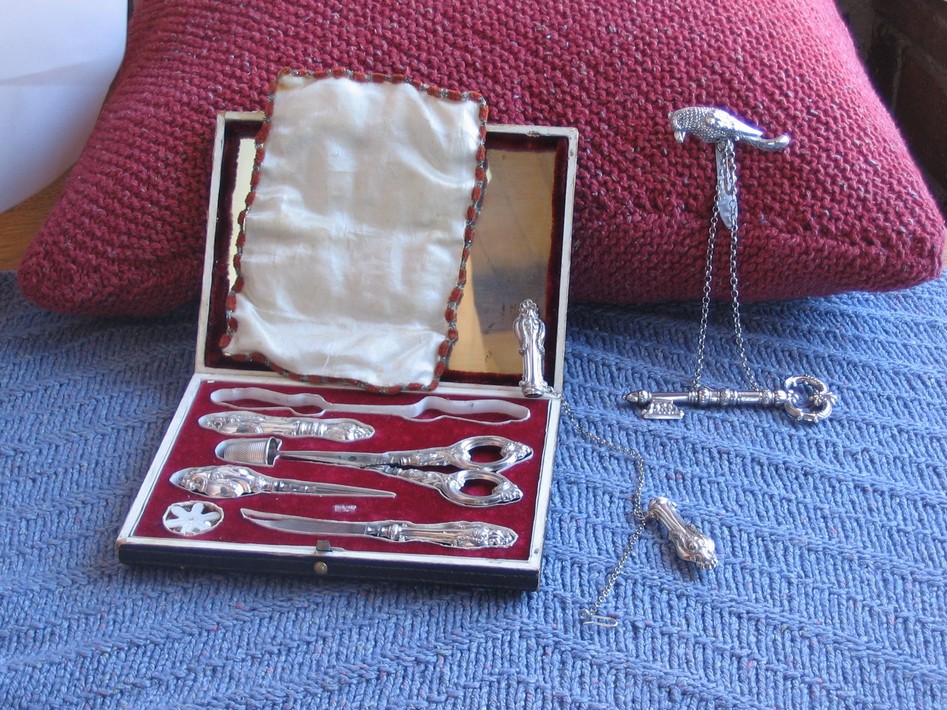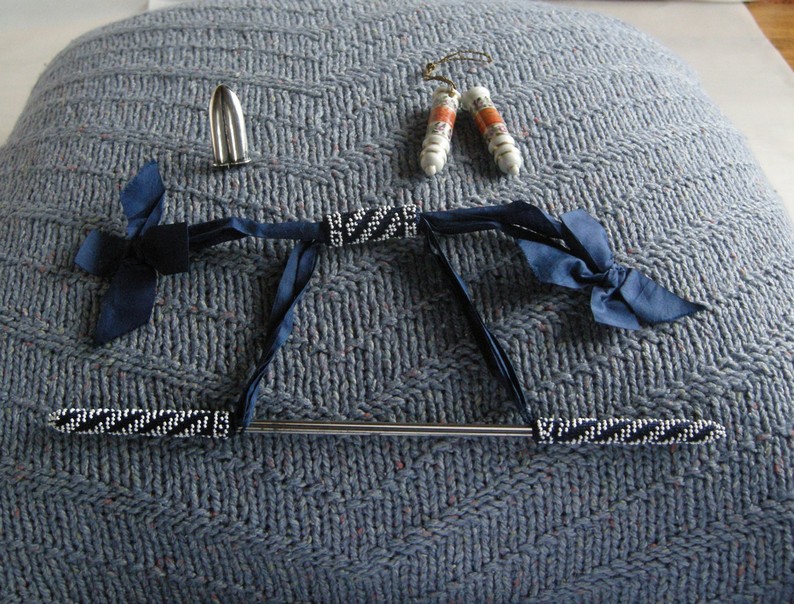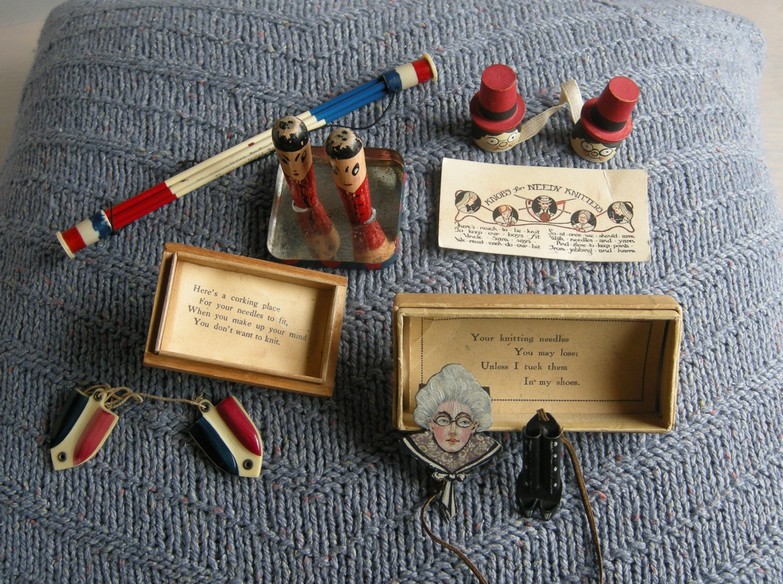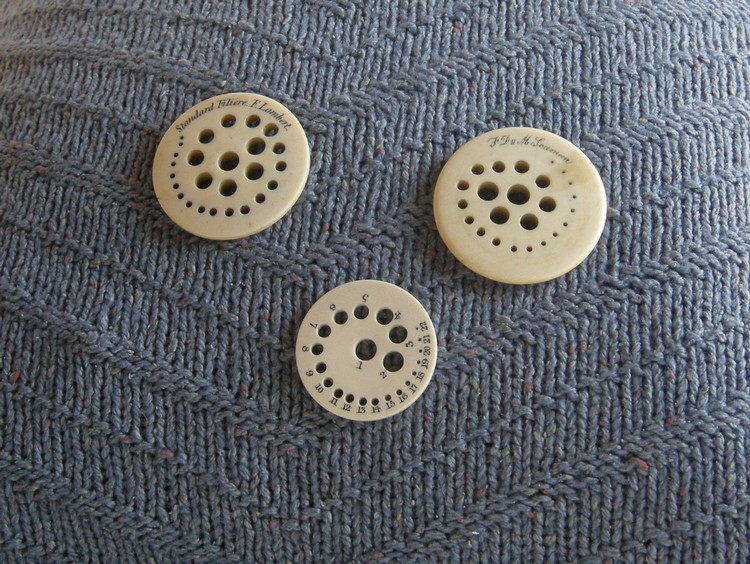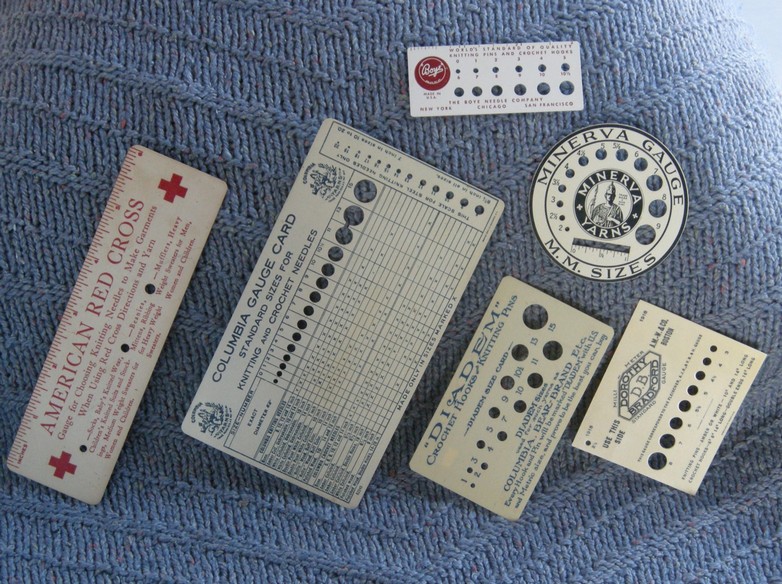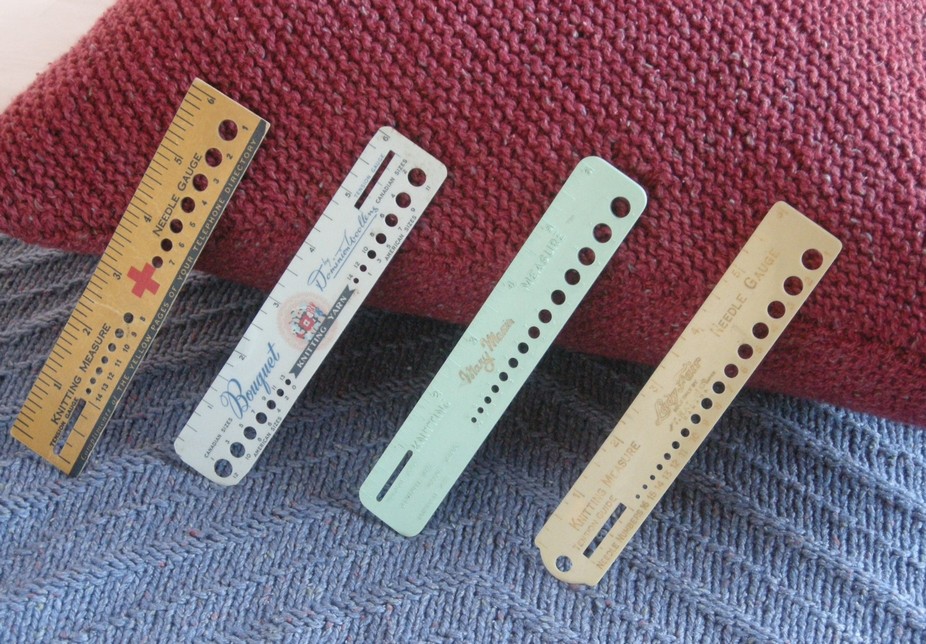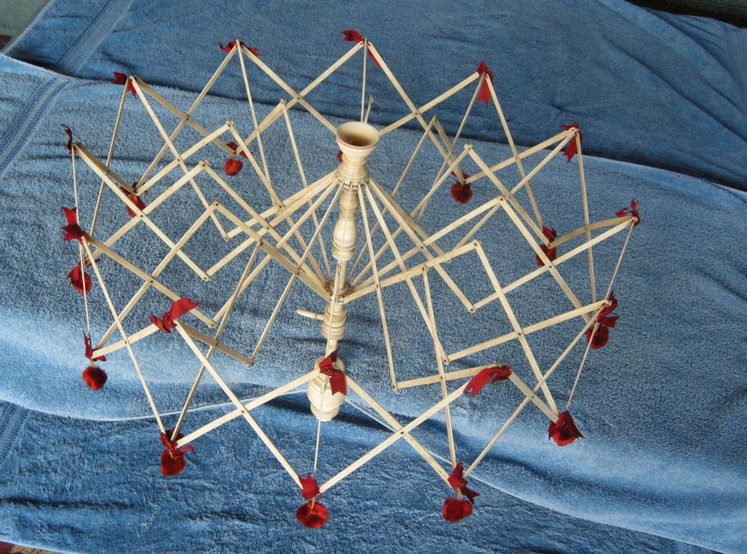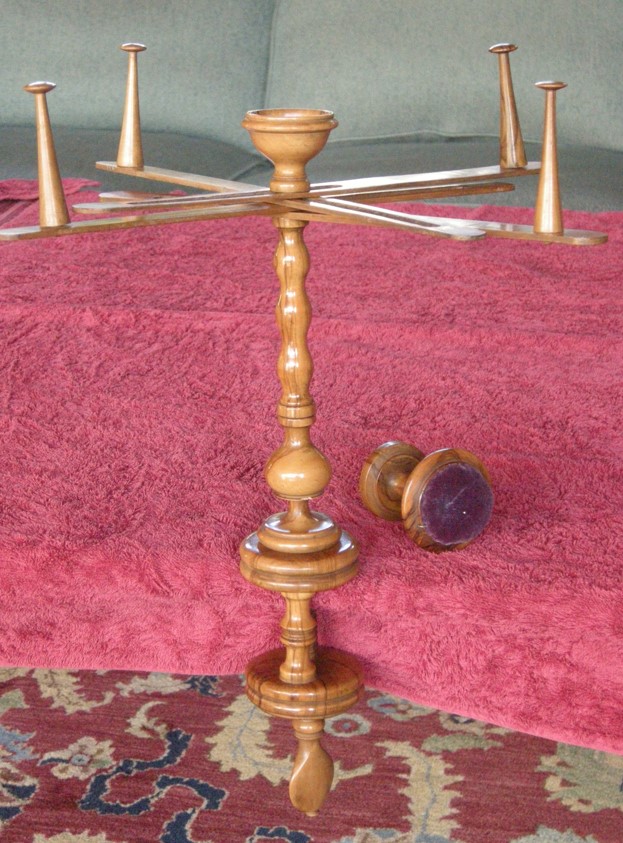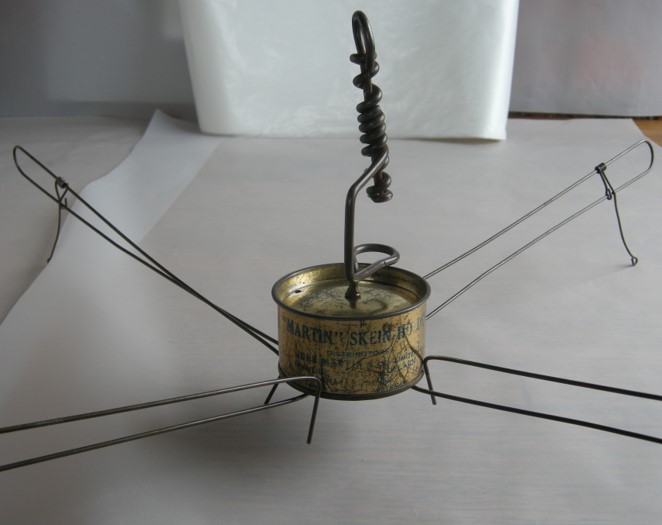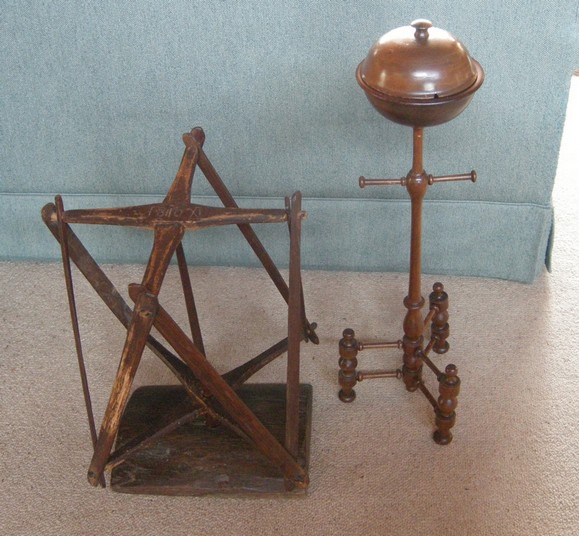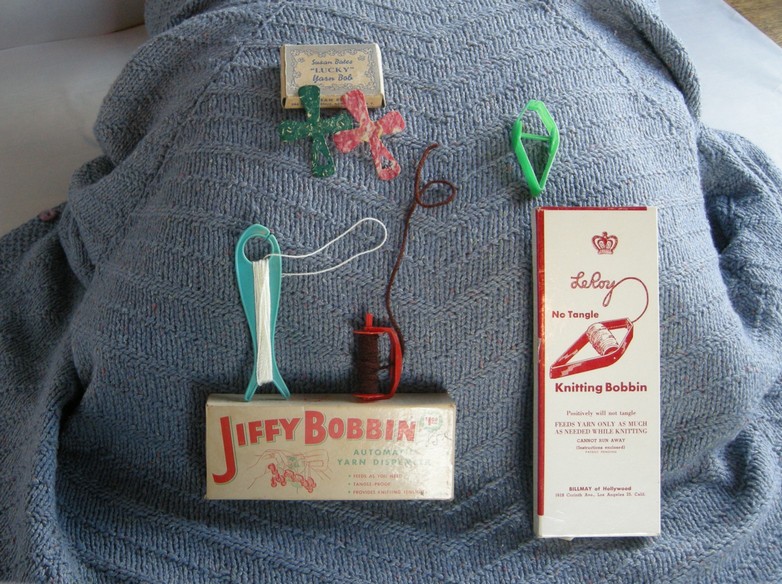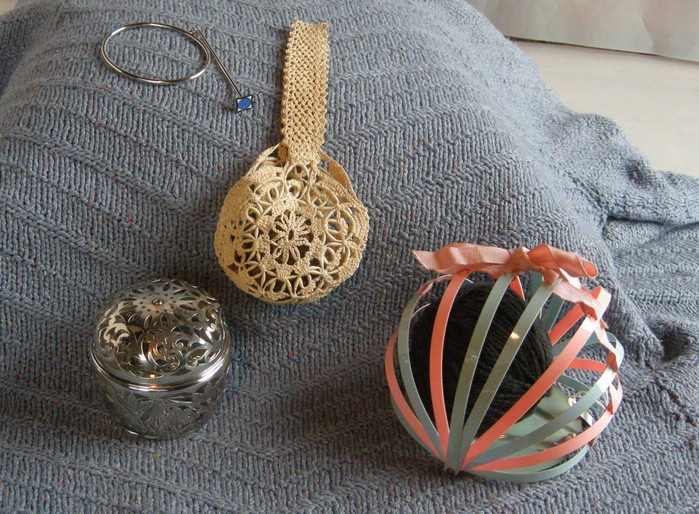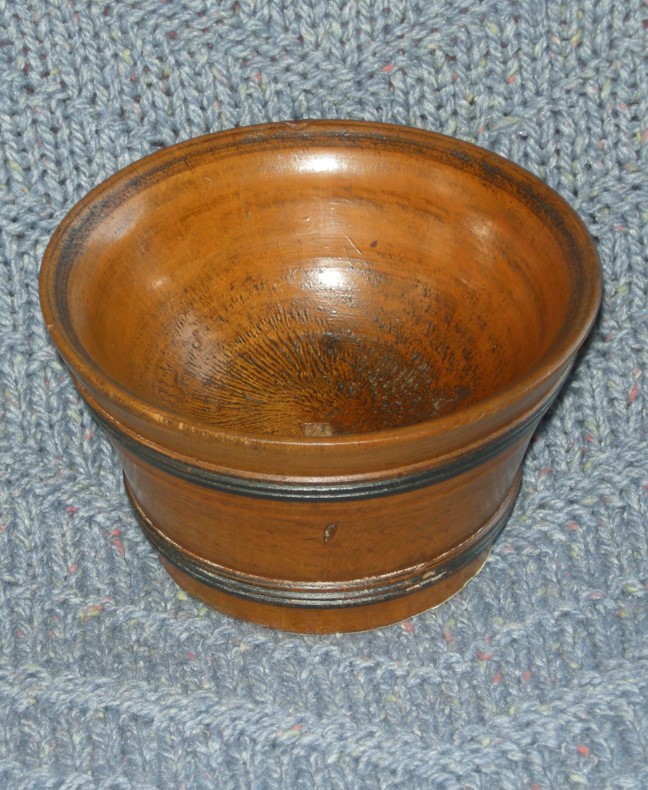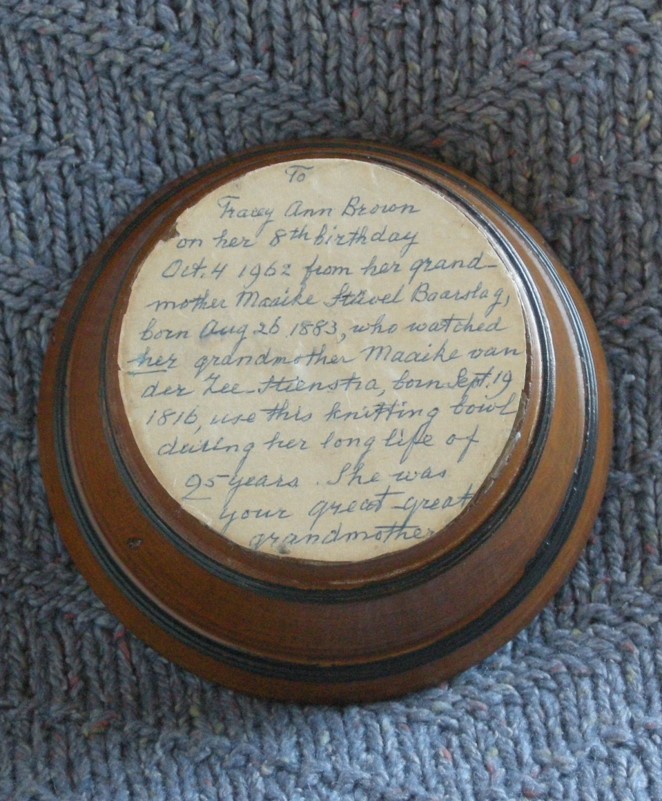Knitting proceeded in two streams – refined folk in the drawing room and common folk knitting to clothe the family or to earn a few extra pence.
What did people knit with in the old days? Common folk used “wires” or “pins”. This shot provided by the Hawes Folk Museum in the Yorkshire Dales shows the difference between the curved “pins” or “wires” on the right, and the later, regular sets of double-points on the left.
Until country people had ready access to stores or markets, wires were carried around by peddlers or “petty chapmen”. References In 16th and 17th century wills to “nitin” wires among the deceased’s stock.
In the 1830’s knitting recipes and patterns appeared. The earliest booklet I have found is Knitting Teacher’s Assistant , first published in 1817 and reprinted regularly from the 1830’2 to the 1870’s.
In 1851 – a UK publication recommended Walkers Needles # 22 for use in their pattern – first branding I have been able to find for KN although not clear if there is any packaging.
Also in the 1850’s pattern books sometimes urged knitters to select needles with knobs or stoppers on one end. Obviously, this great innovation was still so new, it rated a special mention.
